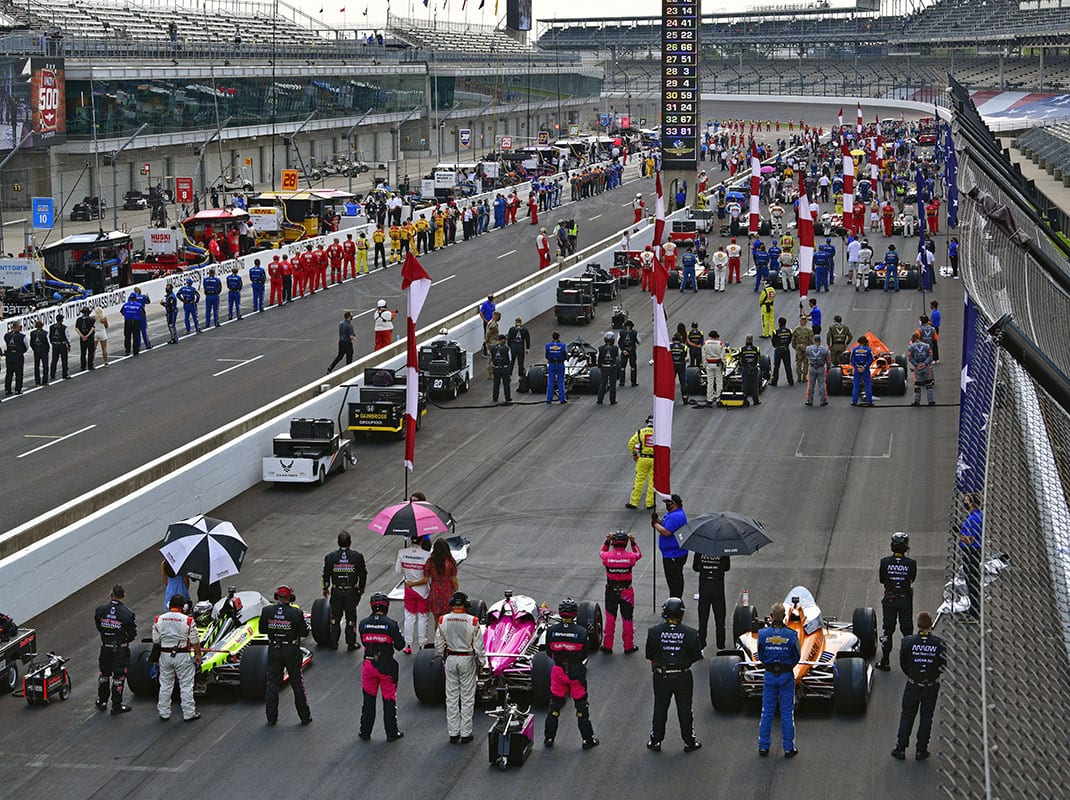Other series took longer to get back on the track.
The NTT IndyCar Series finally opened its season on June 7 at Texas Motor Speedway. It was the first of 14 races, which included doubleheaders at five tracks. Indianapolis Motor Speedway hosted five events, including the Indianapolis 500, which was postponed from its traditional Memorial Day weekend date until Aug. 23 — but was run without fans in attendance.
The season concluded with the Oct. 25 Firestone Grand Prix of St. Petersburg, which was originally slated to open the schedule.
The IMSA WeatherTech SportsCar Championship didn’t race between the season-opening Rolex 24 At Daytona on the last weekend in January and July 4 when its season resumed back at Daytona Int’l Speedway. IMSA completed a full season, but ended it in unusual fashion with the Mobil 1 Twelve Hours of Sebring, which is traditionally run in mid-March, being held on Nov. 14.
Formula One didn’t open its season until July 5 in Austria and was scheduled to run its 17th and final race Dec. 13 in Abu Dhabi.
Lacking a big-money television contract and having the need for fans in the stands to support its business model, the NHRA was silent for much of the season. It returned with a trio of mid-summer events at Lucas Oil Raceway at Indianapolis and finished its season at The Strip at Las Vegas Motor Speedway on Nov. 1.
Along the way the NHRA Camping World Drag Racing Series completed 11 events.
Back in the short-track world, racing continued into November with most traveling series completing abbreviated schedules. The World of Outlaws NOS Energy Drink Sprint Car Series, which generally runs around 90 races, completed 52 this year, but again, creativity was an important factor in making that happen.
The series didn’t make either of its annual West Coast treks and several of its biggest races were nixed for the season. The Kings Royal at Ohio’s Eldora Speedway, the Knoxville Nationals at Knoxville Raceway and the World Finals at The Dirt Track at Charlotte were not run this year. Lesser-paying events with limited crowds were run at Knoxville and The Dirt Track on the dates the Nationals and World Finals would have taken place.
“The biggest obstacle, candidly, was partnering with a facility and understanding the government and local jurisdiction, figuring out what we could do relative to just bringing in the required staff and (teams),” said World Racing Group CEO Brian Carter. “The first event was done with less than 400 people on the property. When you think of the magnitude to do that with less than 400 people is an extraordinary task. From that perspective, that was the initial start of wondering: ‘How do you do this?’ We started modifying it to be in compliance with whatever came our way. It was an interesting learning curve and we’re constantly adapting.”
Eldora Speedway, however, ran only three races this year, and none of them included spectators. Three pay-per-view events (two for late models and one for sprint cars) were the only races conducted at the historic half-mile track owned by Tony Stewart.
Super DIRT Week was replaced by Oktoberfast, which featured a weeklong series of events for New York-based competitors, all held without fans and broadcast on pay-per-view.
Flexible scheduling also allowed other series such as the Lucas Oil Late Model Dirt Series, Ollie’s Bargain Outlet All Star Circuit of Champions, Lucas Oil ASCS Sprint Car Series, all three USAC national divisions and the World of Outlaws Morton Buildings Late Model Series to complete their campaigns.
Like the Indianapolis 500, numerous other big races were canceled or postponed. The Little 500 sprint car race at Anderson (Ind.) Speedway was run on Labor Day weekend and the 24 Hours of Le Mans, usually held in mid-June, was run Sept. 19-20.
As the days got shorter, COVID-19 continued to impact the racing industry. First, the SEMA Show in Las Vegas and later the PRI Trade Show in Indianapolis were canceled.
Still, there were signs of hope as many sanctioning bodies released full schedules for next season and the Lucas Oil Chili Bowl Nationals, the first big event of the new year, remains on schedule for Jan. 11-16 – but with only 25 percent of its usual crowd.
Without a doubt, it was an unusual and challenging season. The champions who did the best job of persevering are honored elsewhere in this issue.
